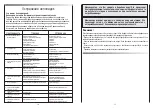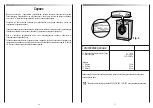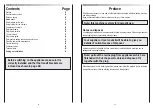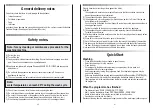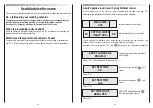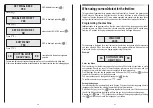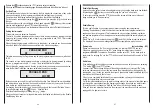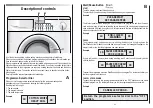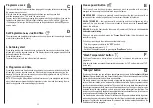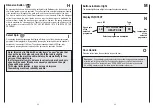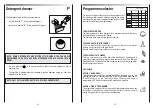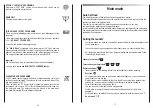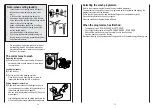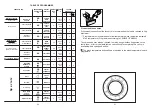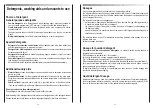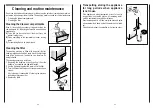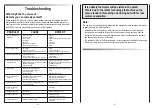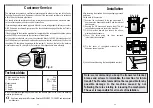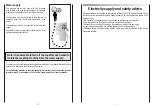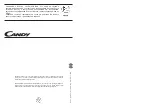
Dosages
Only use detergents which are suitable for use in a washing machine.
You will obtain the best results from your wash with the minimum use of chemical products and
the best care for your laundry if you take into consideration the degree of soiling as well as the
type of detergent to choose.
The amount of detergent to use depends on:
– water hardness, depending on the hardness of the water and the type of detergent used, it
is possible to reduce the amount of detergent.
– the degree of soiling, it is possible to reduce the amount of detergent used depending on
the degree of soiling.
– amount of laundry, it is possible to reduce the amount of detergent when washing only a
small amount of laundry.
The amounts shown on pack for detergents for washing delicates often already refer to a
reduced wash size.
Follow the dosage instructions!
Dosage for powder detergent
For normal and low concentration detergents: for normally soiled laundry choose a
programme without prewash.
Put the detergent in compartment II of the drawer.
For heavily soiled laundry, choose a programme with prewash.
Put
1
⁄
4
of the detergent in compartment I,
3
/
4
in compartment II of the drawer.
When using water softeners, first put in the detergent, then add the softener to compartment II.
For highly concentrated detergents not in single dose format, follow what is shown on pack
exactly as regards type and amount of dosage.
To avoid the difficulty of checking if the detergent has been taken up, use the dosage aids
provided in the detergent packaging.
Liquid detergent dosage
Liquid detergents may be used in accordance with the instructions on the relevant packaging,
for all programmes without prewash, by using the special container which is placed in the
drum or, for those models that have it, in the special insert for liquid detergents.
Detergents, washing aids and amounts to use
Choice of detergent
General purpose detergents
– Powder detergents, for a thorough wash, with bleaching agent, particularly suitable for
use in hot wash programmes (60°C and over), for heavily soiled and stained laundry.
– Liquid detergents, particularly suitable for grease stains, such as greasy skin marks,
cosmetics and oil.
– These detergents are not suitable for washing stained laundry, as they do not contain
bleach.
– Biological detergents, not all the products available give a really through wash.
Special detergents
– Detergents for coloureds and delicates, without added bleach, also often without any
optical brightening agents, to preserve the colour.
– Detergents for a thorough wash, without added bleach or enzymes, particularly suitable
for handling woollen fibres.
– Detergents for curtains with optical brightening agents, resistant to light, to prevent
yellowing from sunlight.
– Special detergents for programmed use of chemical substances, depending on fabric
type, degree of soiling and water hardness.
Here basic detergents, softeners, bleaches/stain removers can be added separately.
Additional laundry aids
– Water softener, means less detergent can be used where water hardness is classed as
hard to very hard.
– Prewash substances, for the programmed treatment of stains prior to the main wash.
Using them means the subsequent wash can be at a low temperature or with bleach-free
detergents.
– Fabric softener, prevents static build-up in synthetic fabrics and softens fabrics.
If you own a tumble dryer, clothes are softened even without the use of a fabric softener.
Do not put solvents in the washing machine!
Keep detergents and other laundry products out of children’s reach.
Before pouring in the detergent check that there are no foreign bodies in the detergent drawer.
Dosage details are usually shown on the detergent packaging. Follow those instructions.
63
62

